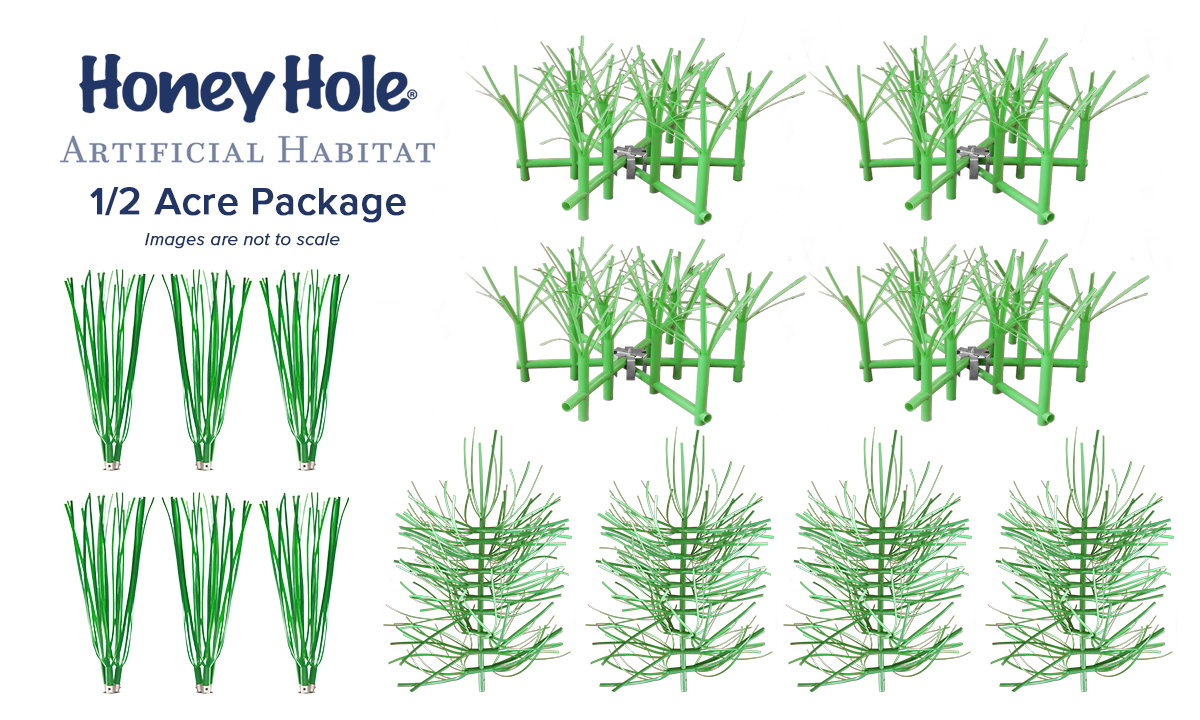Specifications
Varies
Varies
Varies
More Details
- The 1/2 Acre Package ships in 1 box by Fed Ex.
- The 1 Acre Package ships in 2 boxes by Fed Ex.
- The 3 Acre Package ships on 2 pallets by motor freight. The delivery location must have room for a semi to get in and out of the property. A lift gate will be added to the truck to help get the pallets down to the ground.
Shipping rates will be calculated at checkout.
FAQ
| Honey Hole Products | Other Artificial Fish Habitat |
|
|
|
|
|
|
|
|
1/2 Acre Package:
The 1/2 Acre Habitat Package is a great starter pack for a pond with little naturally occurring cover, providing at least some structure at several key
life-stages and depths.
The 1/2 Acre Package includes:
- (4) Honey Hole Grass Bed
- (2) Honey Hole Reeds (6 bases)
- (4) Honey Hole Brush
1 Acre Habitat Package:
The 1-acre habitat package package provides ambush points for predator fish and prime fishing spots, improving predator-prey interactions and supporting healthy fish populations—perfect for anglers and productive fisheries.
The 1 Acre Habitat Package includes:
- (8) Honey Hole Grass Bed
- (4) Honey Hole Reeds (12 bases)
- (12) Honey Hole Brush
3 Acre Habitat Package:
The 3 acre habitat package is designed for larger ponds, where you typically have deeper water, this package provides coverage throughout the water column and enhances areas with limited natural structure, creating essential shelter and feeding zones for fish.
The 3 Acre Habitat Package includes:
- (15) Honey Hole Grass Beds
- (12) Honey Hole Reeds (36 bases)
- (20) Honey Hole Brush
- (8) Honey Hole Tower

Meet life stage and seasonal habitat needs
Environmentally friendly and long lasting










